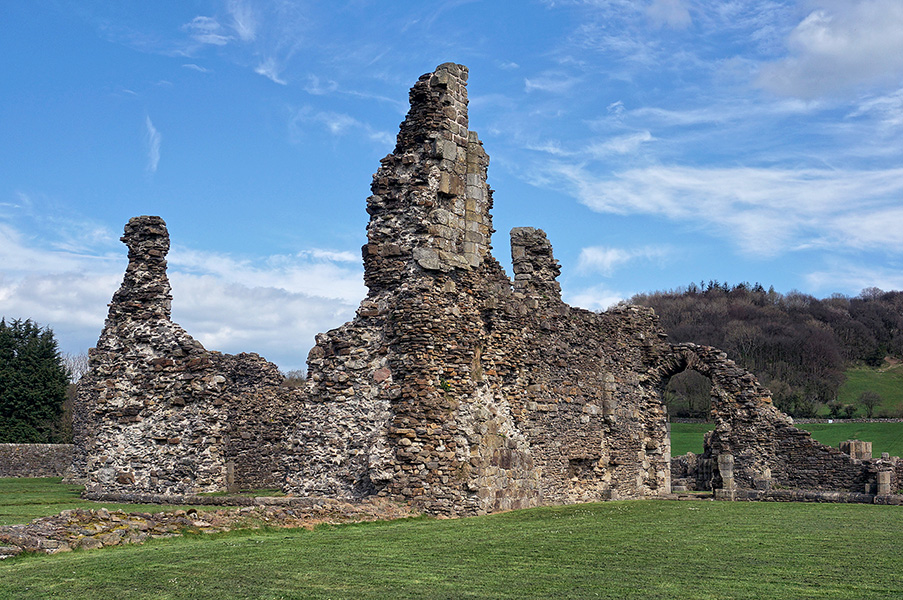 |
| Sawley Abbey from the SW, April 2015 |
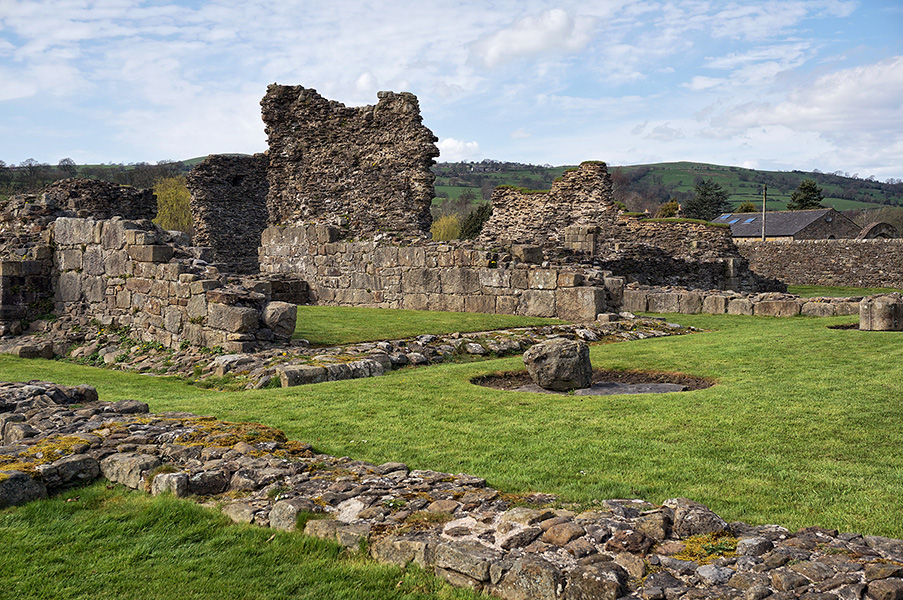 |
| Sawley Abbey from the SE, April 2015 |
 |
| Sawley Abbey from the SW, April 2015 |
 |
| Sawley Abbey from the SE, April 2015 |
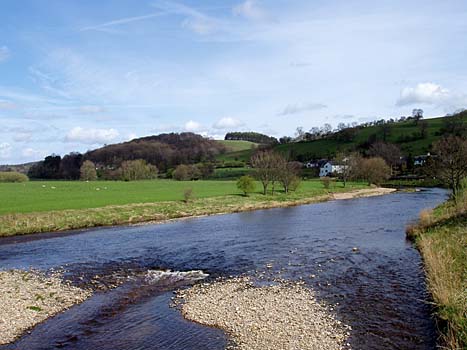 |
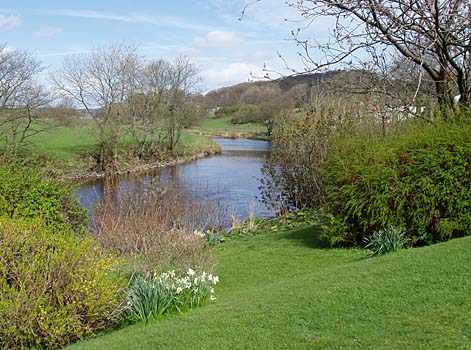 |
|
| The Ribble at Sawley | The Ribble at Sawley | |
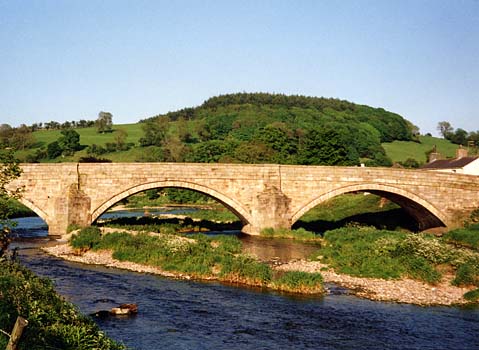 |
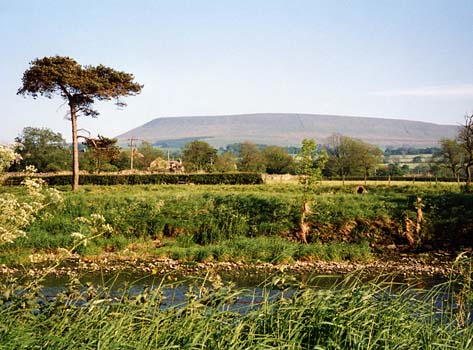 |
|
| The Bridge at Sawley | Pendle from the banks of the Ribble | |
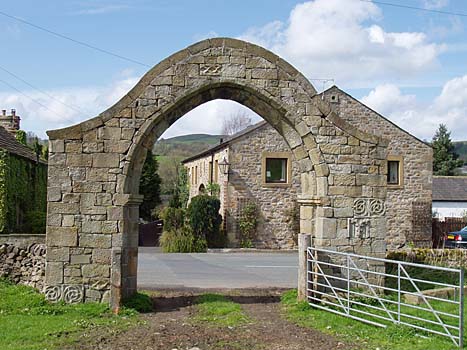 |
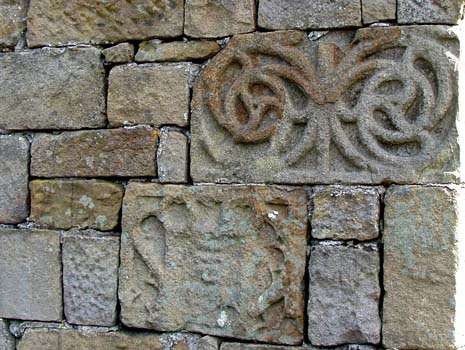 |
|
| Rebuilt Entrance Arch Looking Westwards | Detail of Masonry | |
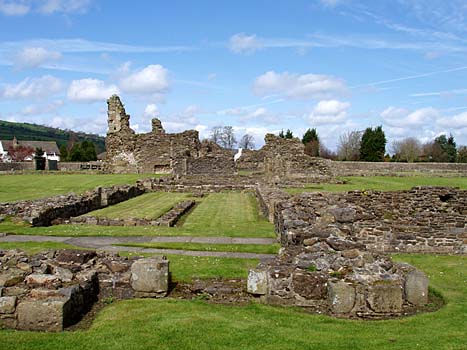 |
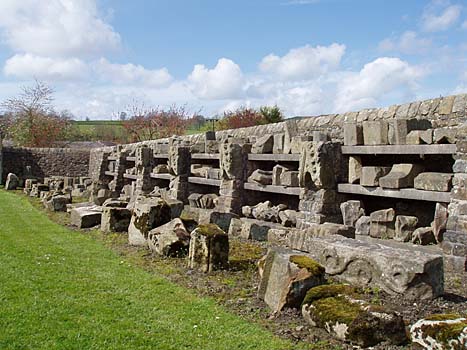 |
|
| General View | Collection of Carved Stones | |
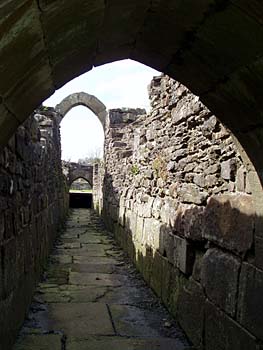 |
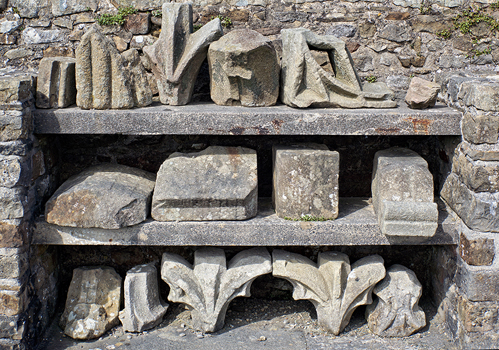 |
|
| Water Channel | Carved Stones, April 2015 | |
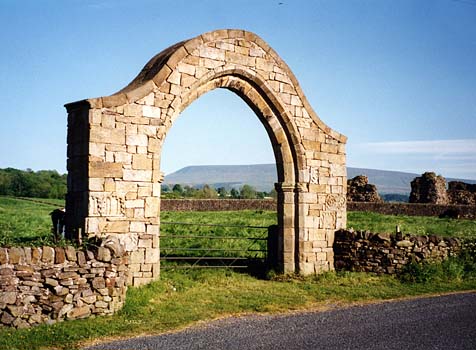 |
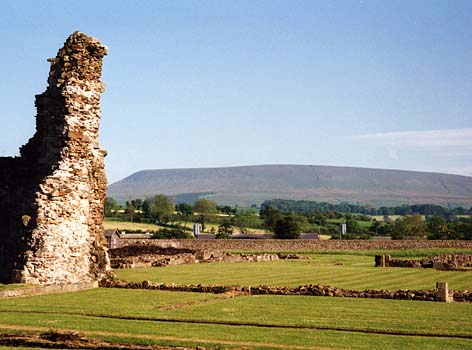 |
|
| Evening light, looking east to Pendle | Evening light looking east to Pendle |
The monks of Whalley were moved to describe the site of their abbey beneath Whalley Nab on the banks of the Calder as locus benedictus - a blessed place. However, the monks of Sawley (or Sallay as it is sometimes known) could certainly match this with their site near the Ribble and in sight of the western slopes of Pendle Hill. For those born and bred in sight of Pendle this is a magical spot today but the name Sawley indicates a marshy place so it may have been less hospitable when the monks first arrived. The pictures shown above are a mixture of modern digital photographs taken near the middle of the day and scans of optical photographs taken in evening light in the Spring of 1997.
Sawley was never a large or rich abbey and now, while the outline of the buildings can be traced, few significant structures remain. Most of the good stone has been taken and it is mainly the rubble core to the walls of the church that remains. Until the first part of the 20th century, there were two arches bridging the road. When these became a hindrance to traffic they were moved and one now faces the road. However, as shown in the picture, the arch was not rebuilt exactly and decorated stones are placed at random. Inspection of houses and barns in the village shows further decorated stones.
Sawley was a Cistercian Abbey founded in 1147 by the Abbot Benedict, twelve monks and ten lay brothers from Newminster Abbey in Northumberland. Initially they had a wooden building provided by William de Percy. Building in stone commenced in the 1150s and although few documentary records survive, there is architectural evidence of new work in the late 1300s. The monks struggled to make a success of the land because of the poor drainage and wet climate and considered leaving the site in about 1200. The head of the order, the Abbot of Clairvaux, recommended that it be dissolved or move. A further grant of land from the Percy family ensured survival. However, in 1296 the monks of Stanlow in Cheshire moved to Whalley and were given the tithes from Whalley church. It was usual for two abbeys to be at a greater distance than Sawley and Whalley and this move led to friction and competition for resources.
In the early 14th century there were Scottish raids this far south and some of the Abbey buildings were destroyed and animals were stolen. The building work on the abbey was completed by the end of the 14th century. The abbey was on the usual Cistercian model. The church had a crossing tower and the cloisters were in the angle between the nave and the south transept. Each transept had three altars. On the west side of the cloisters was the lay brothers' range. On the south side of the cloisters was the entrance to the monks' refectory while to the east lay the monks' dormitory with the night stairs giving access to the church via the south transept. It is the ruins of these buildings that remain on the site today. Fragments of the service buildings are found elsewhere in the village and surrounding fields.
The Abbey was dissolved along with other smaller houses on 13 May 1536 and the land was acquired by Sir Arthur D'Arcy. There arose soon afterwards in the north of England the revolt known as the Pilgrimage of Grace in which the monks of Sawley were involved. In October 1536 about 200 to 300 of the rebels descended on Whalley to force Abbot Paslew to join the revolt. Later the party was met by Thomas Stanley, Earl of Derby and dispersed. However, although Stanley had promised immunity, the two Abbots, two monks from Sawley and two local men, including Sir Stephen Hamerton, were subsequently arrested and executed at Lancaster. To prevent further opportunities for revolt, Sawley Abbey was largely demolished and the stone sold.
J. Harland recounts how excavation in the 19th century revealed some gravestones under piles of rubble and soil. These included the memorials of Robert de Clyderhow, or Clitheroe, and William de Rimington, spelled with many variations. William de Rimington is noted for having opposed the reformer Wycliffe at Oxford and was briefly Chancellor of that University in 1372. His tomb has an inscription translated as:
Here lies Master William Rymynton, Doctor of Divinity and Prior of this House, formerly Chancellor of Oxford on whose soul God have mercy.
The Victoria County History makes the following statement about the last abbot at Sawley:
Sawley Abbey came within purview of the Act, 27 Henry VIII, cap. 28, which dissolved all the monasteries whose annual revenue was below £200. In 1536 Thomas Bolton was abbot, but William Trafford must have succeeded him in that year, for he took part as abbot (with his prior) in the Pilgrimage of Grace in 1536. There is no record of his election in the York Registers, and it was possibly never formally confirmed. On 10 March 1537 he was hanged at Lancaster for high treason. Abbot Trafford belonged to an old Lancashire family, and was the second son of Sir John Trafford of Trafford, by Elizabeth daughter of Sir Thomas Assheton of Ashton-under-Lyne.
Both the latter two families continued of importance in Lancashire for the next four centuries. Some details of later generations of the Trafford family are given on my Cheshire site. The Asshetons of Ashton-under-Lyne were ancestors of the Asshetons of Middleton who acquired monastic lands at Whalley at the Dissolution of that abbey. In 1955, Ralph Assheton of Downham Hall, took the title Lord Clitheroe when he was elevated to the peerage.
Following the Dissolution, the D'Arcy family owned Sawley Abbey until the beginning of the 17th century. The estate was purchased and given to the nation by J. E. Fattorini in 1934. Until 1974 the site was in Yorkshire but after the local government reorganisation it became part of Lancashire.
Sawley Abbey, A Celebration of 850 Years, by The Heritage
Trust for the North West, a booklet produced in 1997.
A History of Sawley Abbey in Craven, a facsimile reprint of J. Harland's
Historical Account of the Cistercian Abbey of Salley in Craven, by Llanerech
Publishers, Felinfach, 1993, ISBN 1 897853 01 7
Victoria
County History for the County of York, Volume 3, 1974